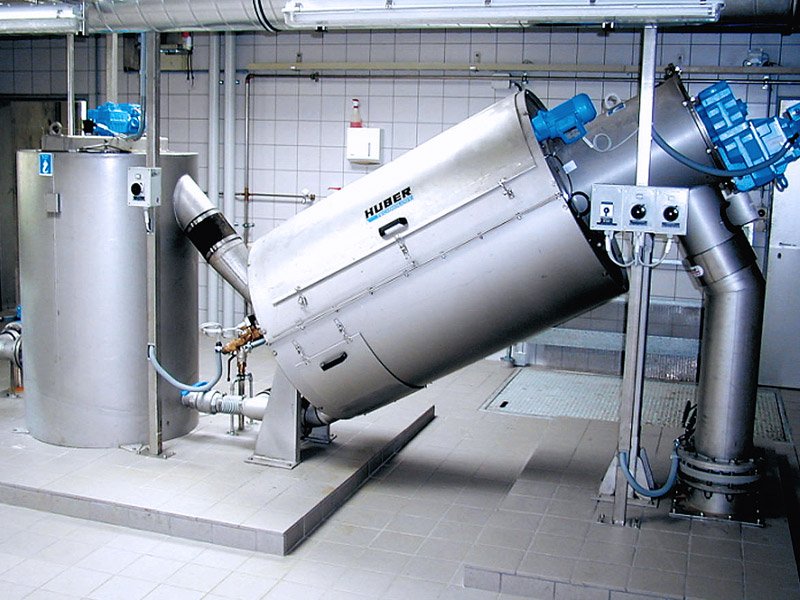Puerto Nuevo/Bayamón Regional Wastewater Treatment Plant

The Puerto Nuevo/Bayamón Regional Wastewater Treatment Plant (WWTP) stands as a testament to modern sewage management and environmental stewardship in Puerto Rico. Serving the dense urban and suburban sprawl of San Juan’s metropolitan area, this facility is critical to the health, well-being, and prosperity of the communities it serves. With a strong focus on technological advancements, community engagement, and sustainability, the Puerto Nuevo/Bayamón Regional WWTP is more than just a processing station for sewage; it is a beacon of innovative environmental management.
Population Served
The Puerto Nuevo/Bayamón Regional WWTP is strategically situated to serve the Metropolitan Statistical Area (MSA) that includes San Juan, Bayamón, and surrounding municipalities. This area is home to over two million residents, approximately two-thirds of Puerto Rico’s population. As one of the principal waste treatment plants on the island, the facility handles both domestic and industrial wastewater. The plant’s operations are crucial in maintaining sanitary conditions and ensuring public health for a dense and diverse population.
Wastewater Volume and Treatment Capacity
The Puerto Nuevo/Bayamón WWTP is designed to treat a daily average flow of up to 100 million gallons per day (MGD), with peak flows reaching up to 150 MGD during high rainfall events due to stormwater infiltration. The treatment process incorporates primary, secondary, and tertiary stages to ensure that the effluent released into local water bodies meets regulatory standards set by the Environmental Protection Agency (EPA) and Puerto Rico’s Department of Natural and Environmental Resources (DNER).
Primary Treatment
In the primary treatment phase, large debris and inorganic materials are removed using screens and grit chambers. Sedimentation tanks then allow for the settling of suspended solids. This initial phase significantly reduces the load of contaminants that need to be dealt with in subsequent stages.
Secondary Treatment
Secondary treatment involves biological processes that degrade organic substances in the wastewater. The Puerto Nuevo/Bayamón plant utilizes activated sludge systems where aeration tanks and microbial communities break down organic matter. This stage is crucial for removing biochemical oxygen demand (BOD) and suspended solids, making the water safer for discharge.
Tertiary Treatment
The tertiary treatment stage is designed to polish the effluent to meet stringent regulatory standards. This phase may include advanced filtration, nutrient removal (such as nitrogen and phosphorus), and disinfection through chlorination or ultraviolet (UV) radiation. The Puerto Nuevo/Bayamón plant has recently upgraded its facilities to include state-of-the-art UV disinfection, which not only is effective but also environmentally friendly compared to traditional chemical methods.
Recent Local News
The past few years have seen significant investments and upgrades to the Puerto Nuevo/Bayamón WWTP, driven by both local and federal funding aimed at fortifying the island’s critical infrastructure. This year, a $50 million modernization project was initiated, focusing on increasing the plant’s capacity and efficiency. This project includes the replacement of old, energy-inefficient pumps, the installation of new odor control systems, and the enhancement of the facility’s resilience against climate change impacts such as rising sea levels and extreme weather events.
Federal Aid and Collaborative Efforts
The Federal Emergency Management Agency (FEMA) granted substantial funds to the Puerto Nuevo/Bayamón WWTP under its Public Assistance Program. This funding is earmarked for restoring the facility’s operations to pre-Hurricane Maria conditions and addressing vulnerabilities exposed by the storm. Collaboration between local agencies, including the Puerto Rican Aqueduct and Sewer Authority (PRASA), and international experts has been instrumental in the plant’s ongoing recovery and modernization efforts.
Community Concerns and Responses
In recent months, there have been public concerns about occasional odor emissions and their impact on nearby communities. In response, the plant administration has hosted several public forums to address these concerns. They’ve also launched an informational campaign to educate residents about the steps being taken to mitigate odors and the technological upgrades underway to improve overall air quality. The establishment of a community advisory board has been a pivotal step in fostering transparent communication and trust between the plant operators and the local populace.
Key Projects
The Puerto Nuevo/Bayamón WWTP is involved in several key projects that aim to ensure long-term sustainability, regulatory compliance, and community well-being.
Energy Efficiency and Sustainability
A major initiative within the plant is the Energy Efficiency and Sustainability Project, which aims to reduce the facility’s carbon footprint and operational costs. This project includes the installation of photovoltaic panels to harness solar energy and the utilization of biogas produced during the treatment process to generate electricity. These measures not only make the plant more self-sufficient but also align with global efforts to combat climate change.
Nutrient Removal Upgrade
The plant is also undergoing a comprehensive nutrient removal upgrade to tackle issues related to nutrient pollution. Excessive nitrogen and phosphorus in treated effluent can lead to eutrophication in receiving water bodies, causing harmful algal blooms and depleting oxygen levels. The upgrade includes the introduction of advanced Biological Nutrient Removal (BNR) technologies, which enhance the plant’s ability to remove these nutrients effectively.
Enhanced Monitoring and Data Analytics
Leveraging advancements in data analytics and IoT (Internet of Things), the Puerto Nuevo/Bayamón WWTP has implemented a real-time monitoring system. This system provides continuous data on various parameters, allowing for proactive maintenance and optimization of the plant’s operations. The integration of Artificial Intelligence (AI) for predictive analysis is also being explored to enhance decision-making processes and operational efficiency.
Community Engagement
Community engagement is a cornerstone of the Puerto Nuevo/Bayamón WWTP’s operational philosophy. The plant administration recognizes the importance of maintaining a positive relationship with the community and actively seeks to involve residents in various aspects of its operations.
Educational Programs
The plant routinely hosts educational tours for schools, universities, and community groups. These tours provide a firsthand look at the wastewater treatment process and underscore the importance of sustainable water management. Special workshops and seminars are also organized to educate the public on issues related to water conservation, pollution prevention, and environmental stewardship.
Public Forums and Transparency
Transparent communication is facilitated through regular public forums and town hall meetings. These forums offer a platform for the community to voice concerns, ask questions, and receive updates on ongoing projects and future plans. The establishment of the community advisory board has further institutionalized this engagement, ensuring that local voices are heard and considered in decision-making processes.
Social Responsibility Initiatives
The Puerto Nuevo/Bayamón WWTP is committed to social responsibility and actively participates in community initiatives. This includes environmental clean-up drives, sponsorship of local events, and collaborations with NGOs to address broader environmental challenges facing the region. By doing so, the plant not only contributes to the community’s well-being but also fosters a sense of collective responsibility towards environmental sustainability.
Conclusion
The Puerto Nuevo/Bayamón Regional Wastewater Treatment Plant is a vital asset for Puerto Rico, serving a substantial population and ensuring that wastewater is treated to the highest standards. Through continuous modernization, adoption of advanced technologies, and robust community engagement, the plant is poised to meet the challenges of the future. The ongoing projects and initiatives underscore its commitment to sustainability, regulatory compliance, and social responsibility, making it a model for other wastewater treatment facilities to follow. As the plant continues to evolve, it stands as a beacon of innovation and a pillar of environmental stewardship for the communities it serves.


